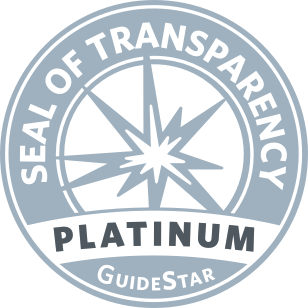
X-linked retinoschisis (XLRS) is an inherited retinal diseasing causing vision loss due to splitting of the layers of the retina.
About the Disease
X-linked retinoschisis (XLRS) is an inherited disease that causes loss of central and peripheral vision due to degeneration of the retina. The retina is a thin piece of tissue lining the back of the eye. Rod and cone photoreceptors in the retina convert light into electrical signals that the brain interprets as vision. About 35,000 people in the United States and Europe have the condition.
XLRS leads to vision loss due to the splitting of retinal layers, which leads to degeneration of photoreceptors. It is caused by mutations in the RS1 gene. The RS1 protein act likes an adhesive to hold the retinal layers together.
Symptoms
XLRS occurs most frequently in males. Although the condition begins at birth, symptoms do not typically become apparent until after the age of 10. About half of all patients diagnosed with retinoschisis notice first a decline in vision. Other early symptoms of the disease include the inability of both eyes to focus on an object (strabismus) and roving, involuntary eye movements (nystagmus).
Vision loss associated with juvenile retinoschisis is caused by the splitting of the retina into two layers. This retinal splitting most notably affects the macula, the central portion of the retina responsible for perceiving detail and colors. On examination, the fovea (the center of the macula) has spoke-like streaks. The spaces created by the separated layers are often filled with blisters and ruptured blood vessels that can leak blood into the vitreous body (the transparent, colorless mass of jelly-like material filling the center of the eye). The presence of blood in the vitreous body causes further visual impairment. The vitreous body degenerates and may eventually separate from the retina. The entire retina may also separate from underlying tissue layers causing retinal detachments.
The extent and rate of vision loss vary greatly among patients with XLRS. Central vision is almost always affected. Peripheral (side) vision loss occurs in about half of all cases. Some patients retain useful vision well into adulthood, while others experience a rapid decline during childhood.
XLRS is genetically passed through families by the X-linked pattern of inheritance. In this type of inheritance, the gene for the disease is located on the X chromosome. Females have two X chromosomes and can carry the disease gene on one of their X chromosomes. Because they have a healthy copy of the gene on their other X chromosome, carrier females are often not affected by X-linked diseases such as XLRS. However, in recent years, more females have been identified with having vision loss from X-linked conditions.
Males have only one X chromosome (paired with one Y chromosome) and are therefore genetically susceptible to X-linked diseases. Males affected with an X-linked disease always pass the gene on the X chromosome to their daughters, who then become carriers. Affected males never pass an X-linked disease gene to their sons, because fathers pass the Y chromosome to their sons.
Female carriers have a 50 percent chance (or 1 chance in 2) of passing the X-linked disease gene to their daughters, who become carriers, and a 50 percent chance of passing the gene to their sons, who are then affected by the disease.
Genetic Testing
Genetic counselors are excellent resources for discussing inheritability, family planning, genetic testing, and other related issues.
Treatment Research
The National Eye Institute and Applied Genetic Technologies Corporation have launched gene therapy clinical trials for XLRS. Gene therapies work by delivering copies of healthy genes to the retina to replace the defective copies that are causing vision loss.
The Foundation is funding other research projects to identify compounds that can preserve vision. Future stem-cell treatments might also benefit people with retinoschisis.
A recent study showed that a drug called dorzolamide may improve retinal health and restore some vision in people with retinoschisis.
Individuals with XLRS may also benefit from the use of low-vision aids, including electronic, computer-based, and optical aids.
Orientation and mobility training, adaptive training skills, job placement, and income assistance are available through community resources.
Next Section
Jump to Section
Latest News
-

Mar 31, 2020
COVID-19 Resources
Foundation NewsThe Foundation Fighting Blindness is closely monitoring the COVID-19 situation and its impact on the IRD community.
-

Feb 6, 2020
ProQR Therapeutics Teams Up with the Foundation Fighting Blindness and Blueprint Genetics to Support the My Retina Tracker® Program for People Living with Inherited Retinal Diseases
Foundation NewsMy Retina Tracker Program is the highest volume IRD genetic testing program in the U.S.
-
Oct 2, 2019
Blueprint Genetics, InformedDNA and the Foundation Fighting Blindness launch an open access program for patients with inherited retinal disease in the United States
Foundation NewsThe program will offer patients with inherited retinal disease no-cost genetic testing and genetic counseling in the United States. Look for updated information on how to participate to be posted in mid-October, with program registration starting shortly thereafter.
-
Aug 16, 2019
Foundation Fighting Blindness Investing Nearly $6.5 Million in New Grants
Foundation NewsThe newly funded research efforts include several therapies that have strong potential to treat a wide range of inherited retinal diseases.
-

May 9, 2019
Foundation Fighting Blindness Endorses 'Eye Bonds' Legislation
Foundation NewsBipartisan Bill Will Stimulate Up to $1 Billion in New Funding for Blindness Research
-

Jul 19, 2018
Foundation Fighting Blindness Urges Congress to Pass ‘Eye-Bonds’ Legislation
Foundation NewsBill Introduced in U.S. House Would Speed Up Cures for Blindness
-

Jun 8, 2018
Foundation Fighting Blindness and CheckedUp® Partner to Educate Retinal-Disease Patients About Research, Resources, and Emerging Therapies During Doctor Visits
Foundation NewsThe Foundation Fighting Blindness (the Foundation) and CheckedUp have formed a collaborative partnership to deliver patient-friendly diagnostic and disease-management information to people with retinal diseases such as age-related macular degeneration, retinitis pigmentosa, and Stargardt disease during their visits to eye doctors.




